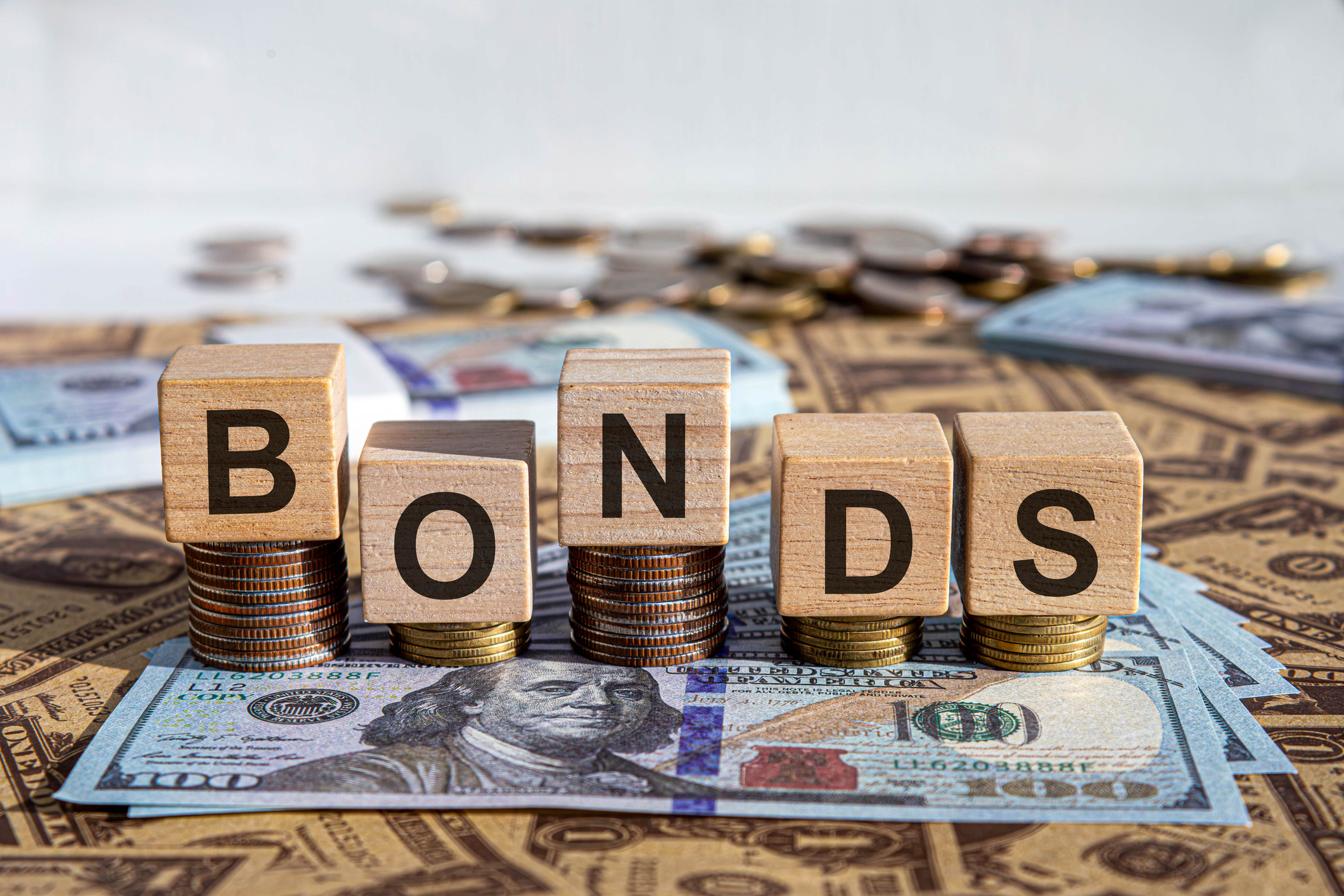The Best Consumer Staples Stocks To Buy
In an uncertain market, the best consumer staples stocks provide consistency and stability to portfolios.


There's no such thing as a "sure thing" in the stock market. But when investors need to protect their portfolios against the winds of uncertainty, they frequently flock to the relative safety of consumer staples stocks.
Small wonder.
The consumer staples sector is made up of companies that produce or sell the basic goods that people need day in and day out.
From just $107.88 $24.99 for Kiplinger Personal Finance
Become a smarter, better informed investor. Subscribe from just $107.88 $24.99, plus get up to 4 Special Issues

Sign up for Kiplinger’s Free Newsletters
Profit and prosper with the best of expert advice on investing, taxes, retirement, personal finance and more - straight to your e-mail.
Profit and prosper with the best of expert advice - straight to your e-mail.
During times of economic difficulty — including slowdowns and recessions — people might rein in their spending across any number of categories.
But they still need to eat and keep clean — providing a steadier baseline of demand for consumer staples stocks than many other industries enjoy.
Today, we'll take a closer gander at the sector: How it's defined, why investors seek exposure to it, and how to find the best consumer staples stocks to buy.
What are consumer staples stocks?
The short answer: Consumer staples stocks are companies whose primary businesses involve producing or selling basic goods, such as groceries and personal-care items.
For a more complete answer, let's look to the Global Industry Classification Standard — a framework used by major index providers to help classify public companies.
According to the GICS, the Consumer Staples sector comprises companies primarily engaged in food and staples retail and distribution, such as owners and operators of hypermarkets, super centers and pharmacies.
It also includes companies that produce food, beverage and tobacco products and manufacture household and personal products, such as detergents, soaps, diapers, cosmetics and perfumes.
Why do investors buy consumer staples stocks?
Consumer staples stocks are similar to the health care and utility stocks in that they deal in the business of necessities — items people ultimately must pay for, rain or shine.
As a result, consumer staples are considered to be defensive stocks.
They generate relatively stable revenues, they're not as economically sensitive, and they can produce oodles of free cash — cash that is frequently handed back to shareholders in the form of high dividend yields.
The defensive underlying businesses and those cash payouts are a powerful one-two punch that can provide vital ballast to portfolios during periods of high volatility.
Naturally, there's no guarantee that staples will always hold up their end of the bargain — consumer staples have historically underperformed during a handful of downturns — but they've frequently proven their worth during bear markets.
On a total-return basis (price change plus dividends), consumer staples outperformed the S&P 500 during the Great Recession (-29% to -55%), 2020 COVID crash (-24% to -34%), 2022 bear market (-9% to -21%).
Those were just sector averages; some individual names performed even better.
This protection comes at a price, however — specifically, lesser upside potential during "risk-on" periods for the market.
While consumer staples enjoy high baseline demand, there's not much growth potential during periods of economic expansion.
You're probably not going to buy double the number of diapers or twice as much soap as you need just because things are going well.
That money is likely going toward other expenditures (on the things consumer discretionary stocks provide).
How to find the best consumer staples stocks to buy
We can't tell you exactly what you'd want out of a consumer staples stock — you might prefer larger companies to smaller firms, or you might be insistent on only buying at deeply discounted valuations.
But we can help you start your search with a basic quality screen.
To get to the following list of the best stocks to buy in the consumer staples sector, we looked at those.
Within the S&P Composite 1500: This index is a combination of the S&P 500, S&P MidCap 400, and S&P SmallCap 600.
This screen allows for stocks of different sizes, but it still represents roughly 90% of America's market capitalization, weeding out the smallest stocks.
With a long-term estimated earnings-per-share growth rate of at least 5%: Consumer staples stocks aren't exactly "growthy" stocks, per se, but we still want to buy companies that are able to improve their profits over time.
Remember: Expectations don't guarantee results.
With at least five covering analysts: We'd like to look at stocks that are on Wall Street analysts' radar, which makes it likelier that there's both more reporting and more insights on these companies.
The more research we have at our disposal, the more educated a decision we can make.
With a consensus Buy rating: All the stocks must have an average broker recommendation of 2.5 or less within S&P Global Market Intelligence's ratings scale.
S&P Global Market Intelligence converts analysts' ratings into a numerical scale. Anything with a score of 2.5 or less is considered a Buy.
With a dividend yield of at least 1.5%: Dividends are often an important consideration for investors buying consumer staples stocks.
Here, we want to make sure that these stocks produce, at the very least, a little more income than the S&P 500 (current yield: 1.3%).
Company (ticker) | Long-term EPS growth rate | Analysts' consensus recommendation | Dividend yield |
Dollar General (DG) | 6.5% | 2.39 | 2.1% |
Tyson Foods (TSN) | 19.6 | 2.29 | 3.5 |
Kroger (KR) | 6.1 | 2.16 | 1.8 |
Sysco (SYY) | 6.1 | 2.10 | 2.6 |
Keurig Dr Pepper (KDP) | 7.2 | 1.91 | 2.7 |
Philip Morris International (PM) | 11.4 | 1.88 | 3.0 |
Coca-Cola (KO) | 6.1 | 1.62 | 2.9 |
Related content
Profit and prosper with the best of Kiplinger's advice on investing, taxes, retirement, personal finance and much more. Delivered daily. Enter your email in the box and click Sign Me Up.
Kyle Woodley is the Editor-in-Chief of WealthUp, a site dedicated to improving the personal finances and financial literacy of people of all ages. He also writes the weekly The Weekend Tea newsletter, which covers both news and analysis about spending, saving, investing, the economy and more.
Kyle was previously the Senior Investing Editor for Kiplinger.com, and the Managing Editor for InvestorPlace.com before that. His work has appeared in several outlets, including Yahoo! Finance, MSN Money, Barchart, The Globe & Mail and the Nasdaq. He also has appeared as a guest on Fox Business Network and Money Radio, among other shows and podcasts, and he has been quoted in several outlets, including MarketWatch, Vice and Univision. He is a proud graduate of The Ohio State University, where he earned a BA in journalism.
You can check out his thoughts on the markets (and more) at @KyleWoodley.
-
 Don't Wait Until January: Your Year-End Health Checklist to Kickstart 2026
Don't Wait Until January: Your Year-End Health Checklist to Kickstart 2026Skip the fleeting resolutions and start the new year with a proactive plan to optimize your longevity, cognitive health, and social vitality.
-
 Premium Rewards Cards: More Perks, Higher Fees
Premium Rewards Cards: More Perks, Higher FeesSome issuers are hiking the annual fee on their flagship luxury credit cards by hundreds of dollars. Are they still worth using?
-
 3 Trips to Escape the Winter Doldrums, Including An Epic Cruise
3 Trips to Escape the Winter Doldrums, Including An Epic CruiseThree winter vacation ideas to suit different types of travelers.
-
 How to Master the Retirement Income Trinity: Cash Flow, Longevity Risk and Tax Efficiency
How to Master the Retirement Income Trinity: Cash Flow, Longevity Risk and Tax EfficiencyRetirement income planning is essential for your peace of mind — it can help you maintain your lifestyle and ease your worries that you'll run out of money.
-
 I'm an Insurance Expert: Sure, There's Always Tomorrow to Report Your Claim, But Procrastination Could Cost You
I'm an Insurance Expert: Sure, There's Always Tomorrow to Report Your Claim, But Procrastination Could Cost YouThe longer you wait to file an insurance claim, the bigger the problem could get — and the more leverage you're giving your insurer to deny it.
-
 Could a Cash Balance Plan Be Your Key to a Wealthy Retirement?
Could a Cash Balance Plan Be Your Key to a Wealthy Retirement?Cash balance plans have plenty of benefits for small-business owners. For starters, they can supercharge retirement savings and slash taxes. Should you opt in?
-
 Changes Are Coming for This Invesco Bond Fund
Changes Are Coming for This Invesco Bond FundThe Invesco BulletShares 2026 Corporate Bond ETF's bonds will mature in 2026. Here's what investors should do.
-
 7 Retirement Planning Trends in 2025: What They Mean for Your Wealth in 2026
7 Retirement Planning Trends in 2025: What They Mean for Your Wealth in 2026From government shutdowns to market swings, the past 12 months have been nothing if not eventful. The key trends can help you improve your own financial plan.
-
 What Defines Wealth: Soul or Silver? Good King Wenceslas' Enduring Legacy in the Snow
What Defines Wealth: Soul or Silver? Good King Wenceslas' Enduring Legacy in the SnowThe tale of Good King Wenceslas shows that true wealth is built through generosity, relationships and the courage to act kindly no matter what.
-
 An Investing Pro's 5 Moves to Help Ensure 2025's Banner Year in the Markets Continues to Work Hard for You in 2026
An Investing Pro's 5 Moves to Help Ensure 2025's Banner Year in the Markets Continues to Work Hard for You in 2026After a strong 2025 in the stock market, be strategic by rebalancing, re-investing with a clear purpose and keeping a disciplined focus on your long-term goals.
-
 The Santa Claus Rally Officially Begins: Stock Market Today
The Santa Claus Rally Officially Begins: Stock Market TodayThe Santa Claus Rally is officially on as of Wednesday's closing bell, and initial returns are positive.
